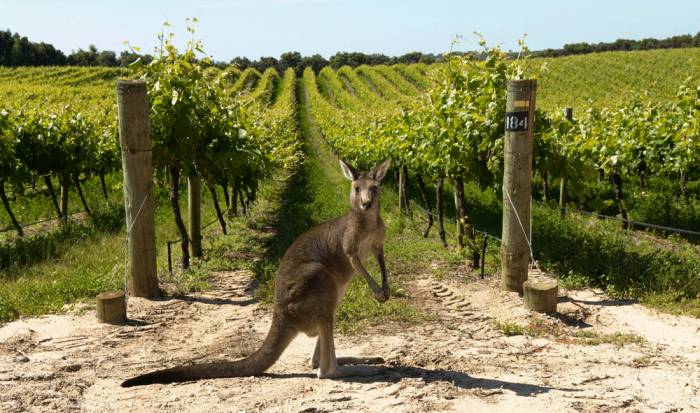Machine Learning Models Explain Up to 80% of Vineyard Costs in Australian Wine Industry Study
Analysis of nearly 1,000 vineyards highlights regional differences, resource use, and sustainability practices shaping economic outcomes and resilience.
2025-11-19

A new study analyzing a decade of data from Australian vineyards has revealed how key operational factors such as fuel, water, and chemical use, along with regional characteristics, shape the economic performance and sustainability of the country’s wine industry. The research, conducted by a team from Queensland University of Technology and the Australian Wine Research Institute, used advanced machine learning techniques to examine the relationships between vineyard operating costs, revenue, and resource management across nearly 1,000 vineyards nationwide.
The Australian wine industry is a significant part of the country’s agricultural sector and economy. However, it has faced recent challenges including reduced tourism and labor due to the COVID-19 pandemic, global freight disruptions, international trade tensions, and rising inflation. These pressures have increased the need for sustainable practices and efficient resource use in wine production.
Researchers collected data from the Sustainable Winegrowing Australia program, which encourages grape growers and winemakers to report on their sustainability efforts. The dataset included more than 6,000 observations from 944 vineyards between 2012 and 2022. Variables tracked ranged from water and fuel consumption to yield, vineyard size, chemical applications, and regional climate conditions.
To analyze this complex dataset, the team applied XGBoost, a machine learning algorithm well-suited for handling mixed types of data and identifying the most influential variables in predicting outcomes like revenue and operating costs. The models explained 77% of the variance in revenue and 80% in operating costs—strong results for agricultural economic modeling.
The analysis found that fuel use (both diesel and petrol), water consumption, vineyard area, and yield were consistently among the most important factors influencing both revenue and operating costs. The frequency of tractor passes for spraying fungicides or insecticides also played a significant role in determining costs. Regional differences were pronounced: location not only affected access to resources like water but also influenced operational decisions such as irrigation methods and disease management strategies.
Regions such as Barossa Valley and Tasmania stood out for their high revenue per hectare but differed greatly in climate—Barossa being warm and dry with a focus on Shiraz grapes, while Tasmania is cooler and wetter, favoring Pinot Noir and Chardonnay. The study highlighted that regional characteristics—such as elevation range, rainfall patterns, temperature extremes, and aridity—directly impact both resource needs and economic outcomes.
Sustainable practices like cover cropping were widely adopted among surveyed vineyards (over 85%), reflecting an industry trend toward environmental stewardship. Cover crops help reduce soil erosion and disease pressure but can also compete with vines for water and nutrients if not managed carefully. The widespread use of these practices meant their direct effect on cost or yield was less visible in the models; however, they remain important for long-term sustainability.
The research also pointed out that economies of scale matter: larger vineyards often have higher absolute costs but can achieve greater efficiency per unit area. Fuel prices were found to be higher in remote regions due to transportation costs. Water access varied significantly by region; for example, vineyards along the River Murray could draw on river water under strict regulation, while coastal regions relied more on surface or underground sources.
While the models provided strong predictions for revenue and operating costs, profit was harder to predict due to its sensitivity to unpredictable factors like weather events or market fluctuations. The authors suggest that more detailed data collection—especially around soil health, varietal choices, and specific farming practices—could further improve understanding of what drives profitability.
The study recommends that policymakers consider region-specific incentives to encourage efficient resource use. It also calls for broader participation in national sustainability reporting programs to improve data quality across the industry. Decision-support tools based on machine learning insights could help growers make better-informed choices about resource allocation and operational strategies tailored to their unique regional circumstances.
This research offers new insights into how Australian vineyards can balance profitability with sustainability by managing inputs according to local conditions. As global demand for wine evolves and environmental pressures mount, such data-driven approaches are likely to become increasingly important for the future resilience of Australia’s wine sector.
Founded in 2007, Vinetur® is a registered trademark of VGSC S.L. with a long history in the wine industry.
VGSC, S.L. with VAT number B70255591 is a spanish company legally registered in the Commercial Register of the city of Santiago de Compostela, with registration number: Bulletin 181, Reference 356049 in Volume 13, Page 107, Section 6, Sheet 45028, Entry 2.
Email: [email protected]
Headquarters and offices located in Vilagarcia de Arousa, Spain.